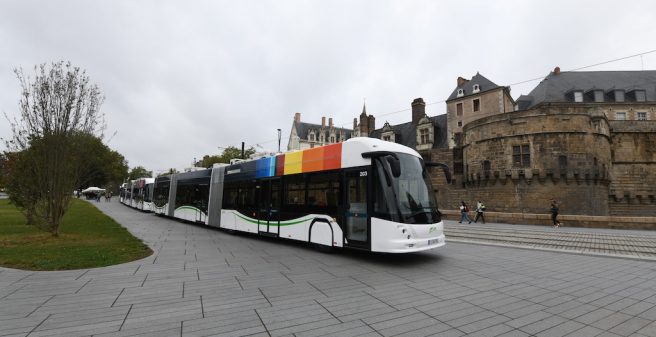
The French city of Nantes started operation of an innovative electric bus rapid transit system, called e-busway. Based on an existing 7 km right-of-way line, the first bi-articulated electric bus, made by HESS and re-charged with ABB TOSA technology started operating on 20 August 2019. 22 new electric 24 meter buses will replace the existing bus fleet by autumn 2019.
The busway concept
Line 4 has been in service since 2006 and connects the city centre of Nantes (Foch Cathédrale) with Porte de Vertou in the south of the city. It operates with a high frequency of 2 – 3 minutes, similar to the city’s tram network. The line has been branded as line 4 as a continuation of the tram line 1 – 3. 23 natural gas buses are service. The average speed is 21 km/h. In 2017, the line transported 9.5 million passengers which makes a rough 40,000 passengers per day. With growing passenger numbers, line 4 has been a victim of its own success. The 18 m buses are not sufficient anymore.

Terminus Foch Cathédrale in the historic city centre of Nantes I Photo: UTM 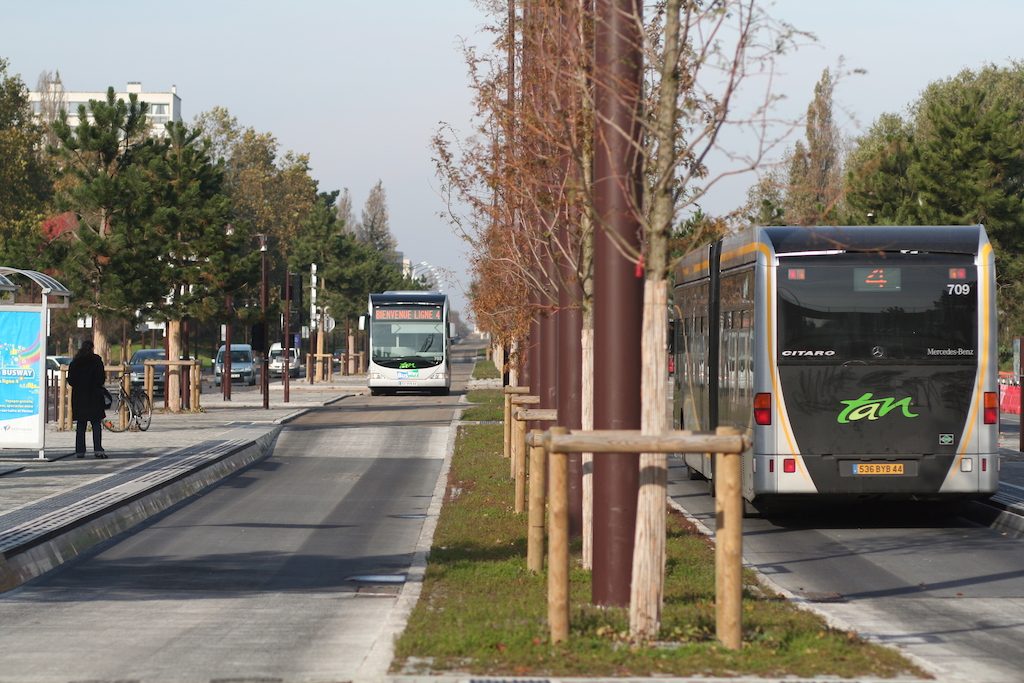
The busway line has been built with “light rail” standards such as right-of-way and low-floor entrance station platforms I Photo: UTM 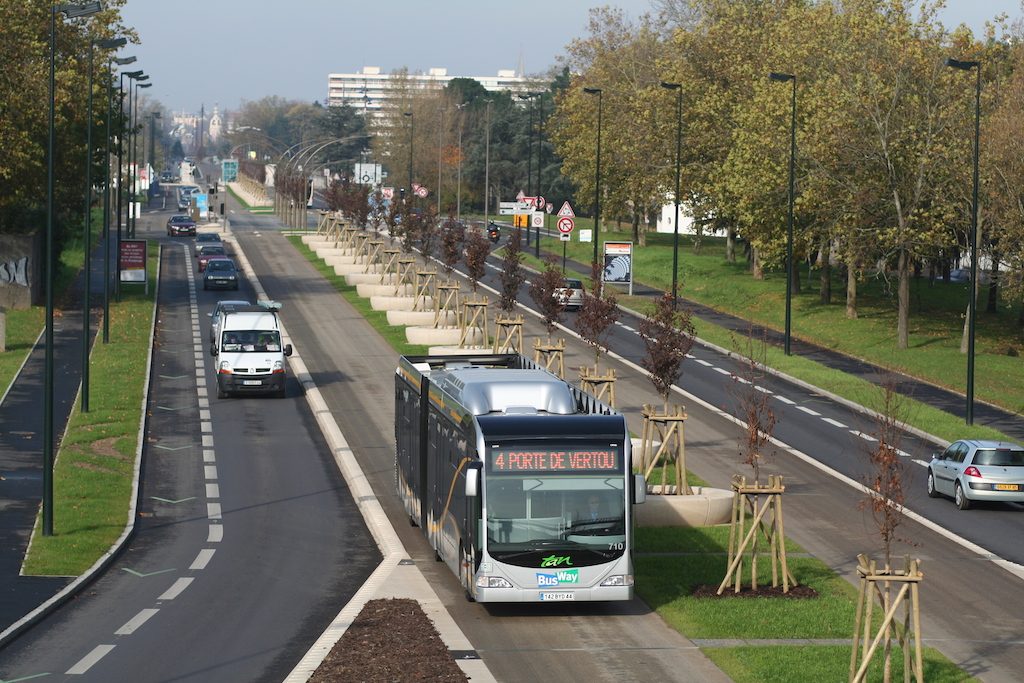
The existing busway fleet will be entirely replaced by the HESS lighTram I Photo: UTM 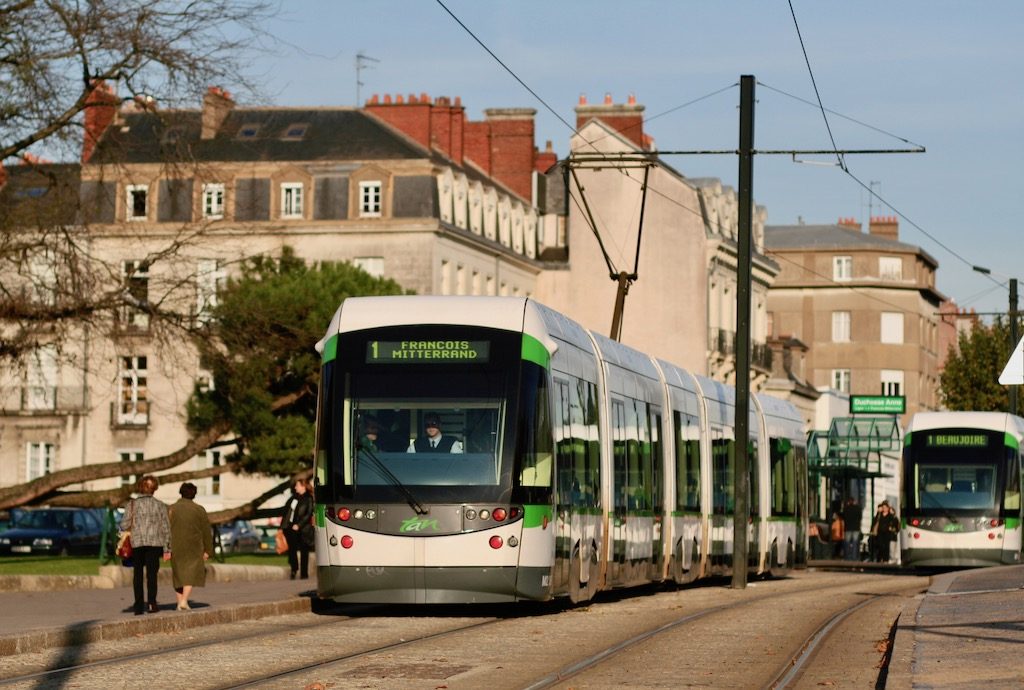
Nantes has three tram lines – the fourth line has been built as a “busway” instead of a “tramway” I Photo: UTM
Conversion to electric operation
In order to improve the capacity and quality issues and to reduce the emissions in the city of Nantes, Nantes Métropole and the operator Semitan/ TAN decided in 2016 to convert the line into electric operation, making the “busway” an “e-busway”. A tender was launched in July 2016 which was won by the Swiss bus manufacturer HESS which is working together with the Swedish-Swiss electrical system provider ABB. The first so-called lighTram 25 has been presented in Nantes in December 2018.
Since the end of August, the first new bi-articulated 24 m HESS buses started operating on the line. During autumn 2019, the remainder will enter operation. The Swiss-built buses offer 35 % more capacity than the previous 18 m fleet. The new buses shall allow the operator to achieve a ridership of 56,000 passengers per day in 2020.
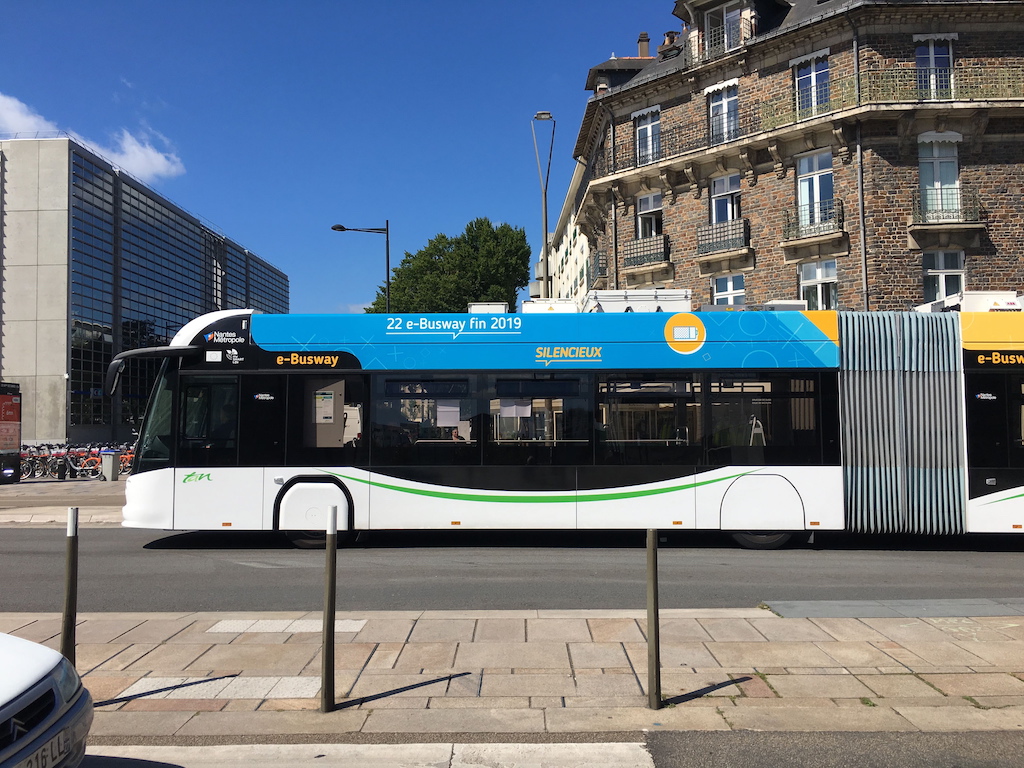
The HESS lighTram/ e-busway in test operation in Avenue Carnot I Photo: Stephan Menoret/ Nantes Métropole 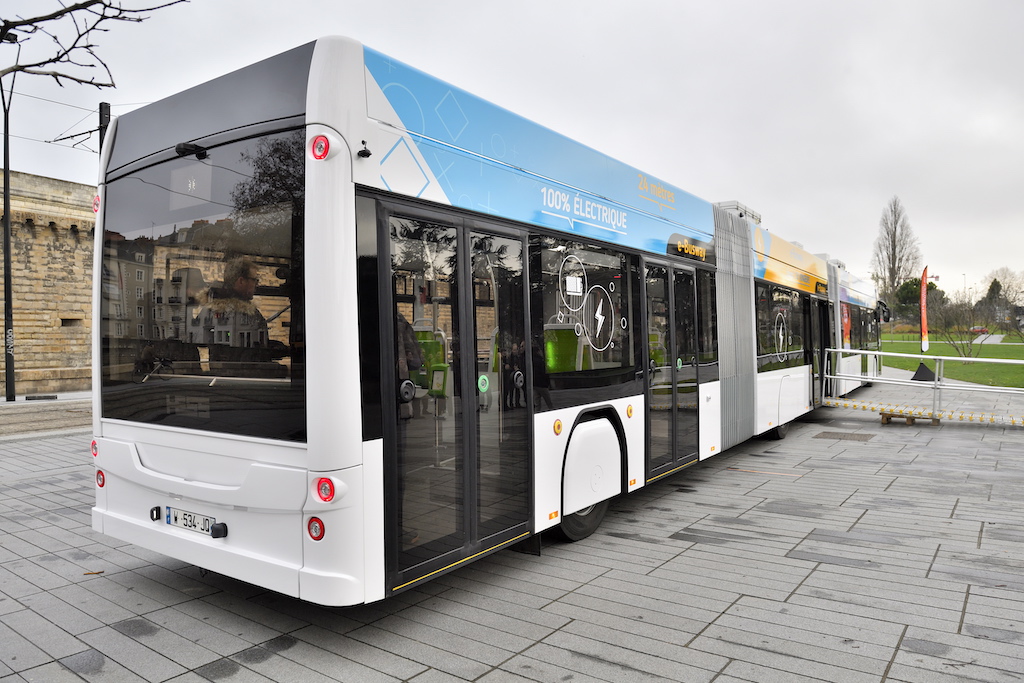
Präsentation of the SEMITAN/ TAN e-busway in Nantes in December 2018 I Photo: Stephan Menoret/ Nantes Métropole 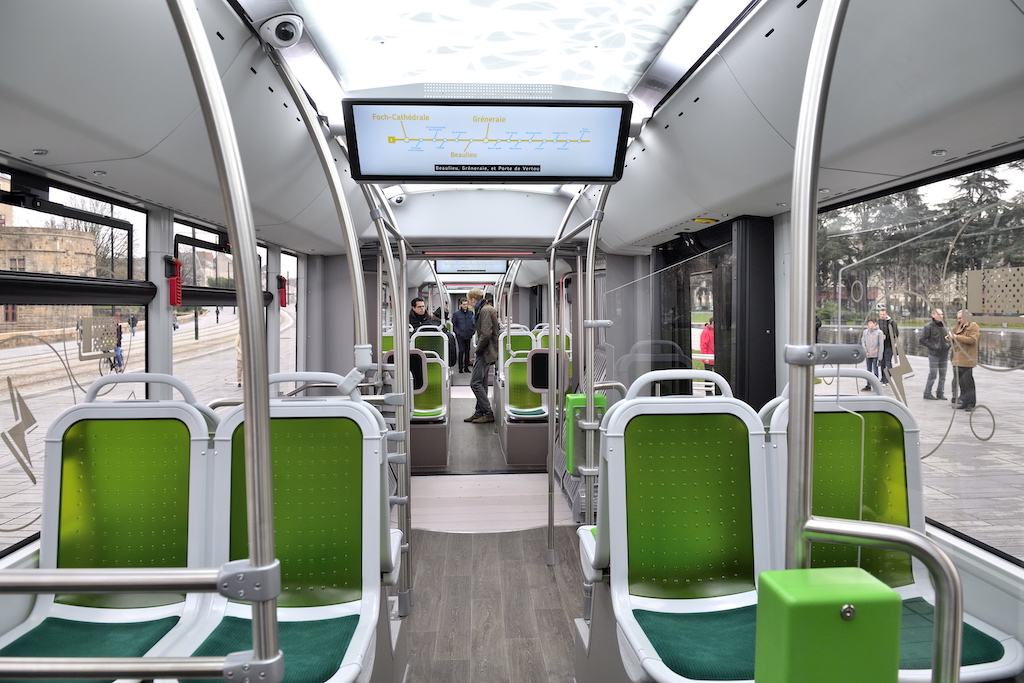
The interior of the lighTram/ e-busway is comfortable and full of light I Photo: Stephan Menoret/ Nantes Métropole
ABB TOSA flash-recharging
The re-charge takes place via flash-charging at both terminus and at two intermediate stations via a converted pantograph. The batteries are charged in 20 seconds with a 600-kilowatt (0.6 Megawatt) boost of power while passengers are embarking and disembarking. It takes less than one second to connect the bus to the charging point, making it the world’s fastest flash-charging connection technology. A further 1 to 5 minutes charge at the terminus at the end of the line enables a full recharge of the batteries. The charging technology has been supplied by ABB which is part of its TOSA (Trolleybus Optimisation Système Alimentation) solution, which is in operation in Geneva (Switzerland) since 2013.
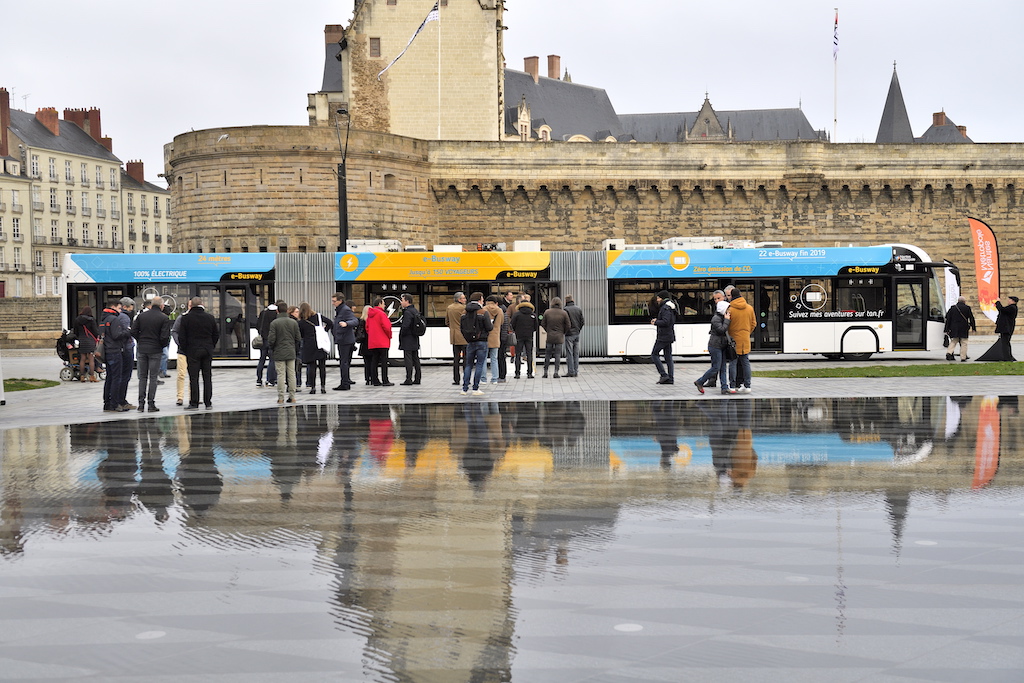
Presentation of the first e-busway at the Nantes Castle in December 2018 I Photo: Stephan Menoret/ Nantes Métropole
The HESS lighTram 25
The HESS lighTram 25 is in fact a bus with several marking tram characteristics such as its length of 24.38 m. The articulated lighTram consists of three sections and is capable of transporting 150 passengers of which 40 can be seated and 108 are standees. There is space for two wheel-chairs.
The buses are equipped with ABB drivetrain technology, comprising traction and auxiliary converters, permanent magnet traction motors, roof-mounted battery units and energy transfer systems.

Rear area of the HESS lighTram/ e-busway I Photo: Stephan Menoret/ Nantes Métropole 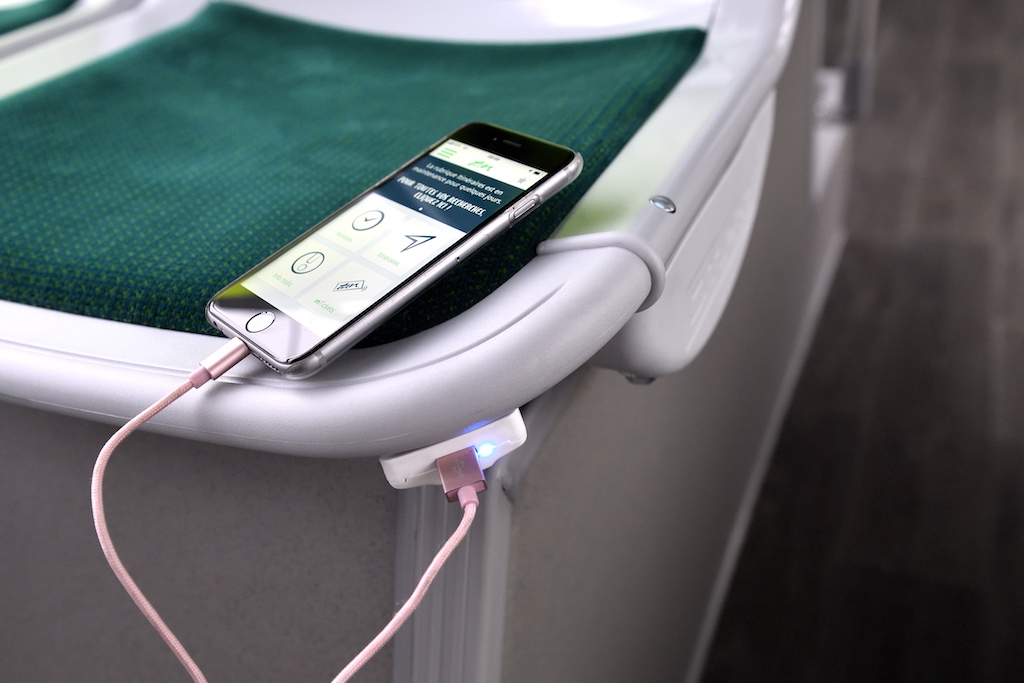
All seats are fitted with USB sockets I Photo: Stephan Menoret/ Nantes Métropole 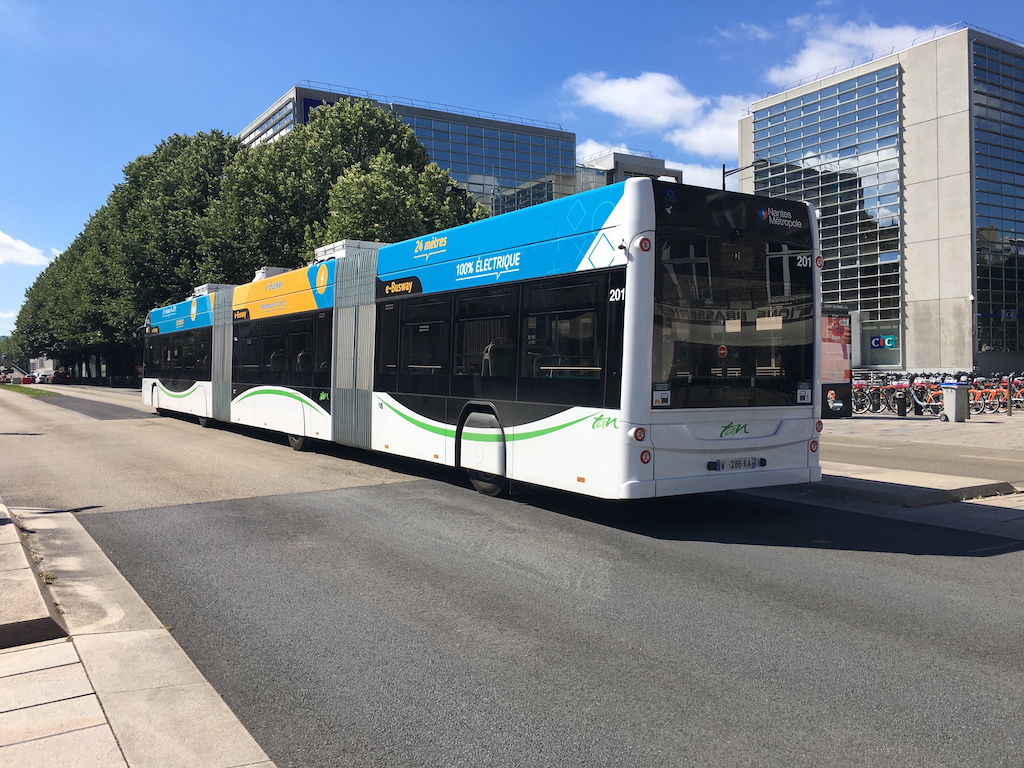
The first HESS lighTram/ e-busway started operation on 20 August 2019 on the e-busway line 4 I Photo: Stephan Menoret/ Nantes Métropole
The e-busway has been fitted with a new livery which has been launched in 2016. The new livery is a mix between curved lines, black window stripes and white surfaces. The livery is also featuring a green line, Semitan’s/ TAN’s brand colour. The colour scheme has been developed together between the local company GRAPHIBUS and Semitan. The new livery will be applied on all new and existing buses. Furthermore, each of the 22 buses has been decorated with colorful roofs by 22 different artists. The seat layout has been provided by the Italian company RUSPA. The so-called citipro seat model is semi-transparent, illuminated and fitted with USB ports.
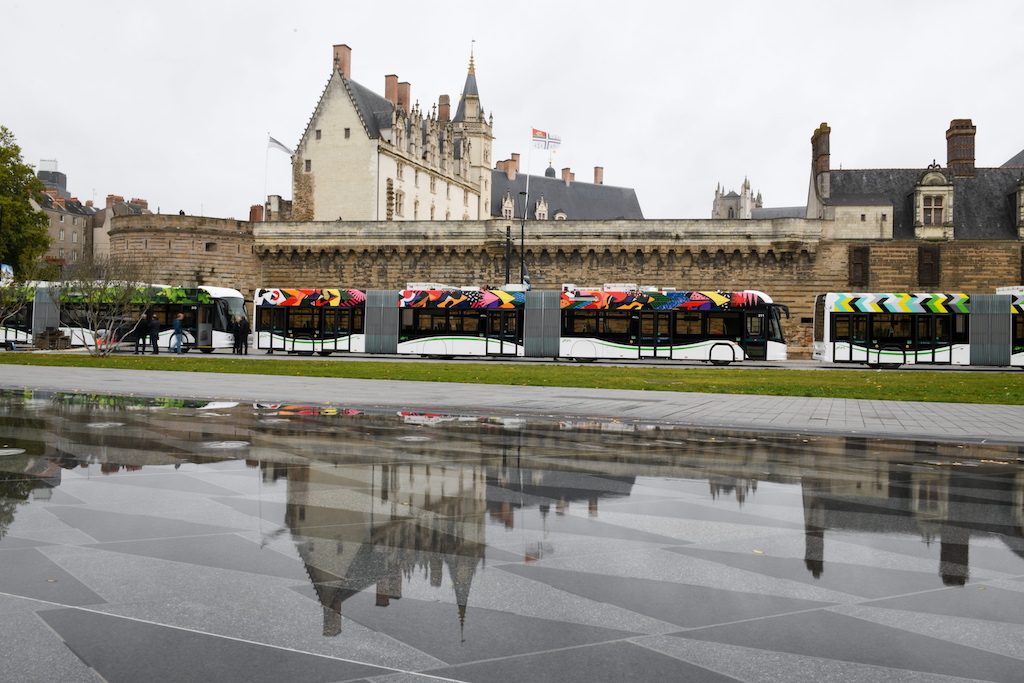
Presentation of the colorful designs in front of the Nantes castle I © Crédit Patrick Garçon/ Nantes Métropole 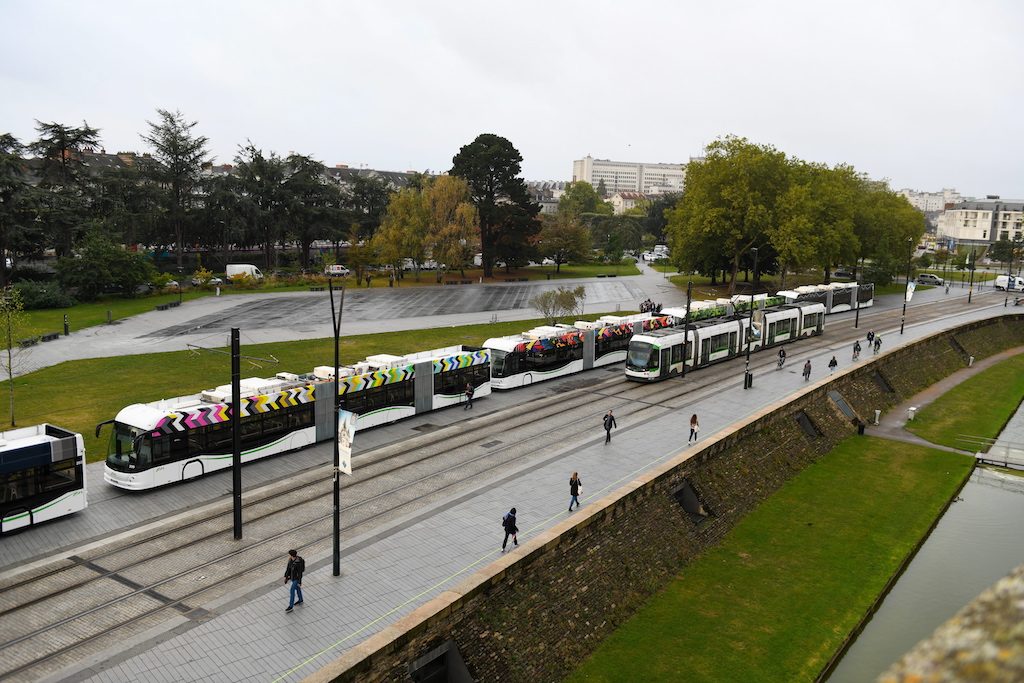
The E-Busways next to the Nantes tram line 1 I © Crédit Patrick Garçon/ Nantes Métropole 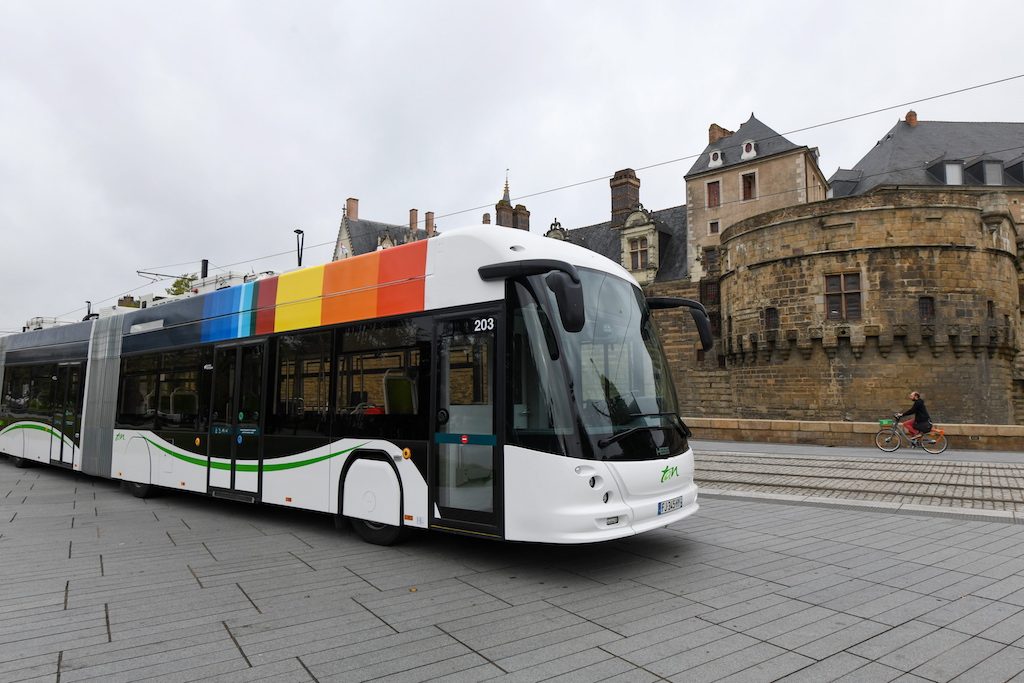
Close-up of one of the HESS E-Busways with colorful design I © Crédit Patrick Garçon/ Nantes Métropole
The project
The e-busway is the first project of its kind in Europe. The overall implementation budget is of 52.9 million € including the procurement of the 20 HESS vehicles. In Vertou, a new depot specifically for the e-busway has been created including a charging station. Along the line 4, platform stations and minor infrastructure adaptations were also made in order to facilitate the operation of the new e-buses. The 23 Citaro O 530, operated with natural gas and purchased in 2006, will be transferred to the so-called Chronobus C5 line which will be converted into a busway line in spring 2020 including the construction of right-of-way infrastructure, platforms and traffic management. The 6 km line connects the SNCF station south and “Hangar à Bananes” and will be branded busway line 5.
29.09.2019


